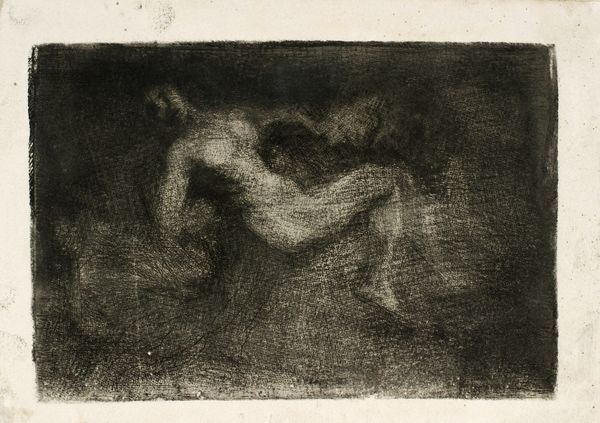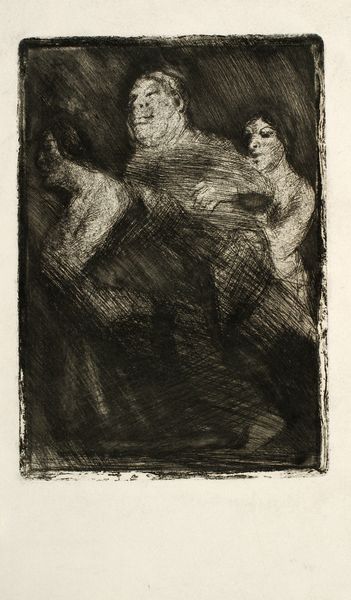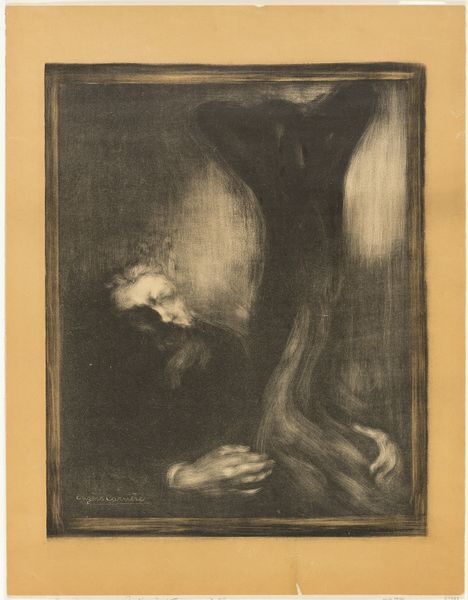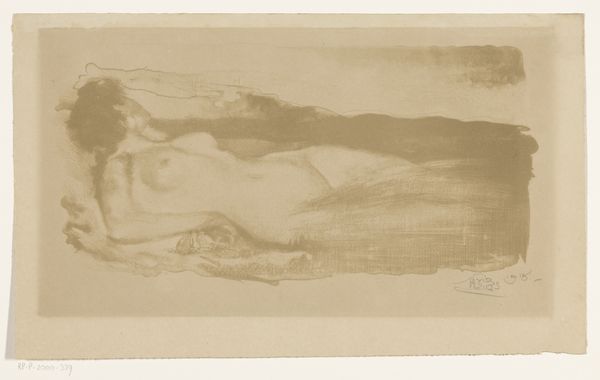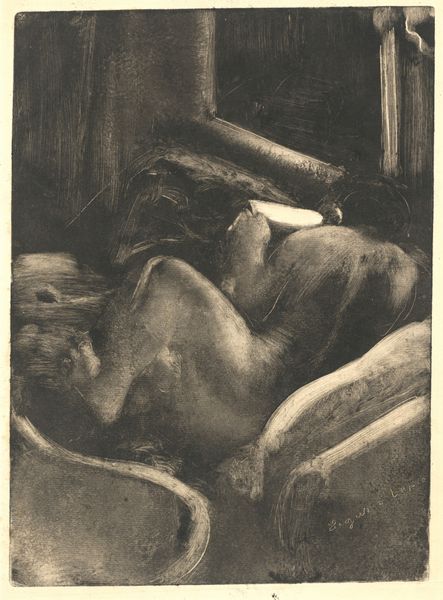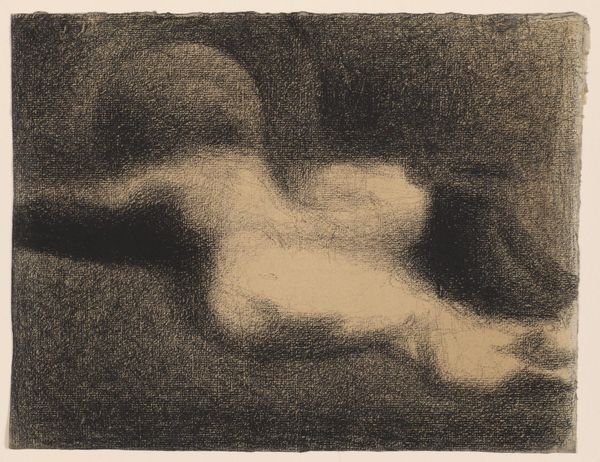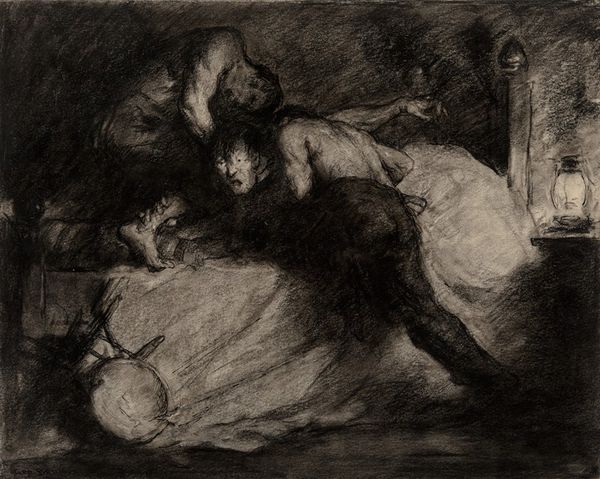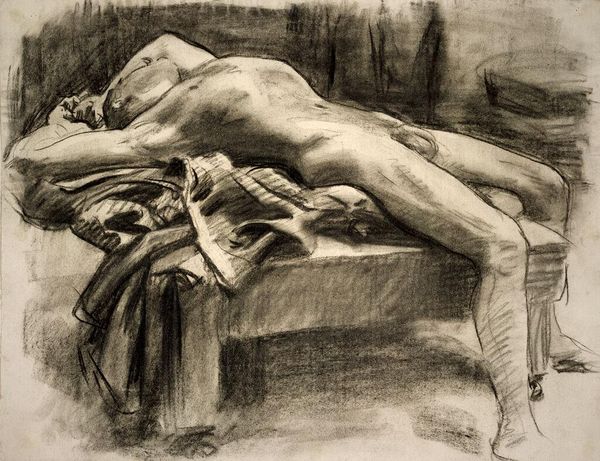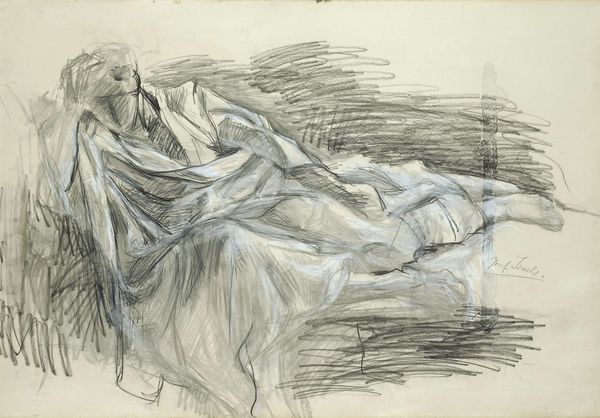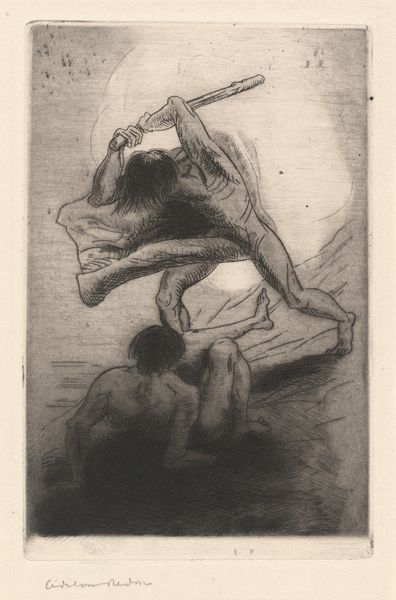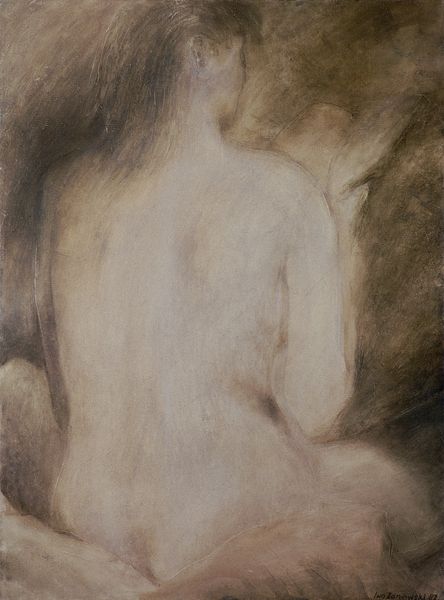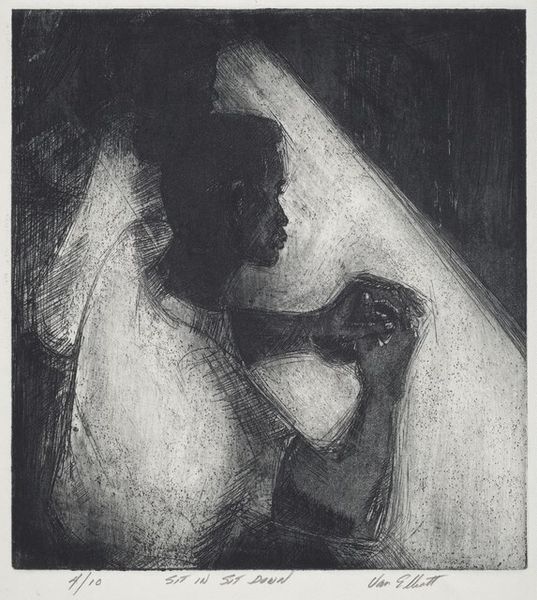
aquatint, drawing, print, charcoal
#
aquatint
#
drawing
# print
#
charcoal drawing
#
figuration
#
charcoal
#
charcoal
#
erotic-art
Dimensions: 126 mm (height) x 169 mm (width) (plademaal)
Editor: This charcoal drawing from 1907 is called "Two Witches Fighting over a Broomstick" by Oluf Hartmann. I’m struck by how shadowy and intense it is; the figures almost seem to emerge from the darkness. How do you interpret this work within its historical context? Curator: The intense shadow work you noted is a fascinating starting point. Considering Hartmann was working at a time when the occult was both feared and romanticized, the visual drama serves a particular social purpose. The drawing portrays an idea that was very common in literature and art at the time, depicting witchcraft not only as a forbidden practice but as a territory women fought over. The visual darkness obscures specific identities and points to wider cultural anxieties about female power. Does the drawing’s somewhat indistinct quality contribute to its mysterious and, arguably, transgressive aura? Editor: Definitely. It's difficult to make out clear features, almost like the figures are deliberately obscured, adding to that transgressive feel you mentioned. It makes you wonder about the role of societal anxieties in shaping depictions like this. Was this kind of depiction of women common at the time? Curator: It was more widespread than we often acknowledge. Sensational portrayals of women associated with magic, especially those who challenged societal norms, sold art. We can read it, therefore, as not just an imaginative illustration, but also a commercial one responding to popular demand, one that could reinforce existing biases and power structures, and explore them in controlled, artistic spaces. It speaks volumes about how even supposedly fantastical subjects are often deeply rooted in reality. Do you see this reflected in other artwork or themes within that time? Editor: That’s a perspective I hadn’t fully considered. Now I see how anxieties about female power were cleverly exploited in art as entertainment, highlighting both cultural fears and the public's morbid fascination. Thanks for expanding my understanding of this piece. Curator: And thank you for bringing your fresh perspective to it.
Comments
No comments
Be the first to comment and join the conversation on the ultimate creative platform.

